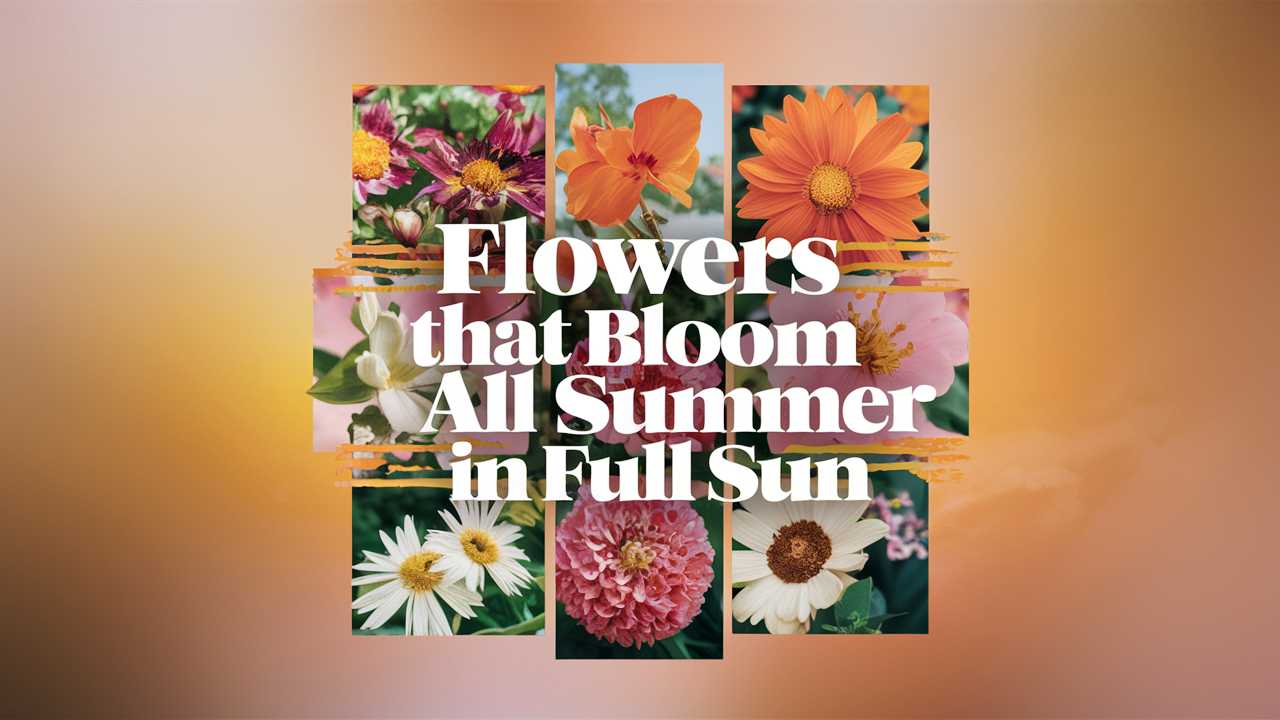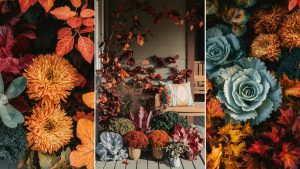This in-depth guide explores a variety of beautiful flowers that thrive in sunny conditions, ensuring that your garden remains an oasis of color and life all summer long.
Catmint (Nepeta x faassenii)
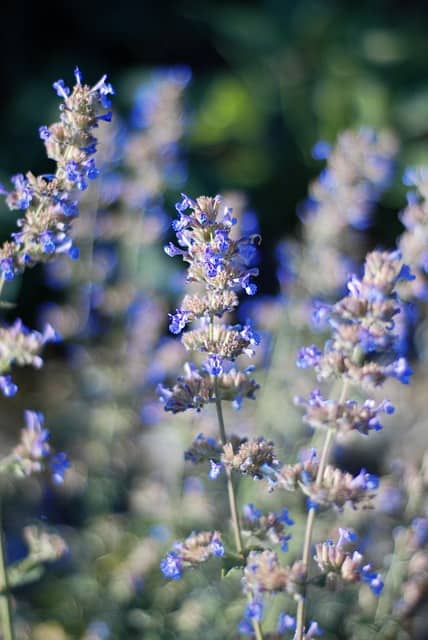
Catmint is a standout in the garden, captivating with its vibrant lavender-blue flowers and aromatic foliage. This perennial is tough and drought-resistant, making it perfect for sunny spots that require low maintenance. Growing up to 2 feet tall, catmint produces a profusion of blooms from late spring into early fall, attracting pollinators like bees and butterflies.
The leaves of catmint release a delightful minty fragrance when brushed against, adding another sensory layer to the garden experience. It thrives in well-drained soil and can tolerate poor soil conditions. To encourage a bushier appearance and prolong blooming, consider shearing the plant back after its first bloom.
Additionally, this perennial is an excellent choice for borders and containers, bringing a cheerful pop of color at the front or along pathways in the garden landscape.
Blanket Flowers (Gaillardia)

Blanket flowers are known for their striking, daisy-like blooms featuring bright reds, yellows, and oranges that resemble a Native American woven blanket. These perennials flourish in full sun and are hardy plants that can handle drought conditions once established, making them a superb addition to water-wise gardens.
Typically growing about 1 to 3 feet tall, blanket flowers provide a long-lasting display from early summer through the fall. They not only add vibrant colors but also attract hummingbirds and butterflies, contributing to a lively atmosphere in your garden.
To ensure a continuous bloom, deadhead the flowers regularly, which encourages the plant to produce more buds. They thrive in well-drained soils and can adapt to various soil types, making them incredibly versatile for any garden bed.
Ice Plant (Delosperma)
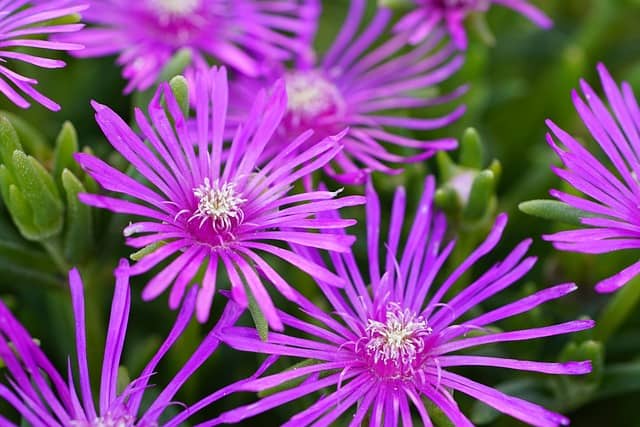
Ice plants are unique succulents that showcase dazzling pink, yellow, or white flowers that bloom all summer long. Known for their fleshy leaves and mat-forming growth habit, ice plants are perfect for ground cover in sunny areas. These hardy perennials thrive in USDA zones 5 through 9 and are drought-tolerant, making them ideal for low-water gardens.
The abundant blooms open with the sun and create a brilliant display that can attract various pollinators. Ice plants appreciate sandy or rocky soils that drain well, and they can also thrive in poor nutrients, making them incredibly resilient.
Consider planting ice plants in rock gardens or along pathways, where they can spill over edges, creating a lovely cascading effect.
Roses (Rosa)
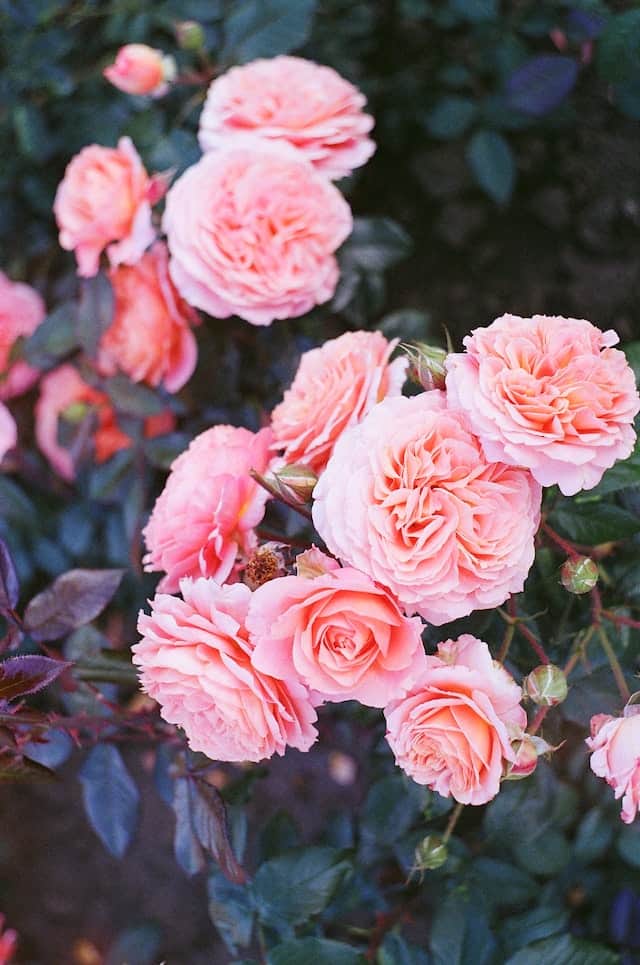
Roses are a quintessential element of many gardens, bringing an elegance that cannot be matched. These classic flowers bloom from late spring to frost, providing a continuous array of colors, fragrances, and forms. Many varieties thrive in full sun, needing at least six hours of direct sunlight daily to flourish.
When selecting roses for summer blooms, consider repeat-flowering varieties, which offer fresh blooms throughout the season. Proper care, including deadheading, watering, and mulching, will keep your roses healthy and blooming profusely.
Planting roses in well-drained soil with good air circulation helps prevent diseases. With proper attention and care, your rose garden can become a dazzling, fragrant haven all summer.
Hydrangeas (Hydrangea macrophylla)
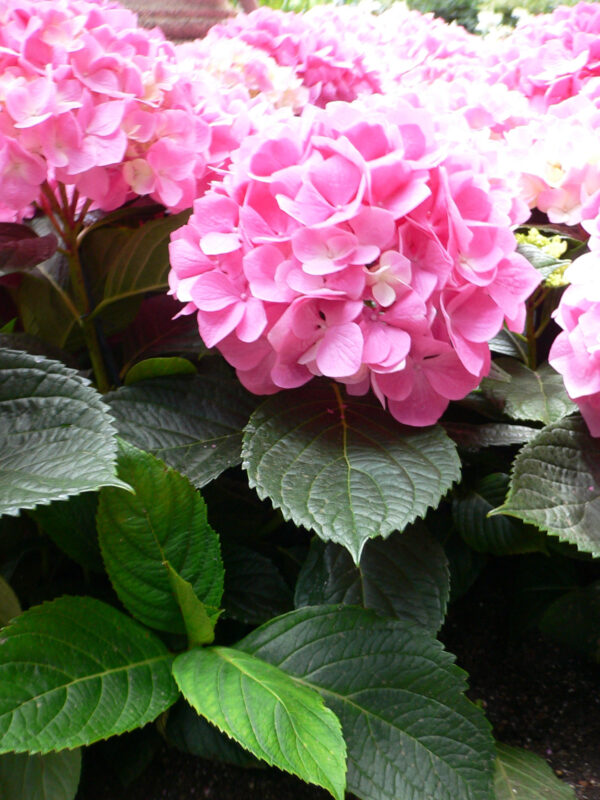
Though commonly known for their shade tolerance, some hydrangea varieties, such as the paniculata type, thrive beautifully in full sun. They produce large, showy flower clusters in shades of pink, blue, and white, adding a dramatic flair to your summer landscape.
To ensure optimal blooming in full sun, it is crucial to provide consistent moisture to prevent wilting. These hydrangeas are generally hardy and can grow up to 10 feet tall, making them perfect for background planting as well as focal points in the garden.
Regular pruning after blooming will encourage healthy growth for the following season, ensuring that your hydrangeas not only bloom abundantly in summer but also continue to thrive year after year.
Dahlias (Dahlia)
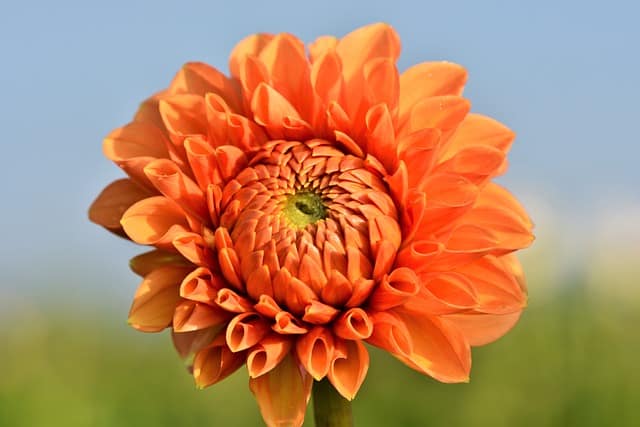
Dahlias are a diverse group of flowers renowned for their stunning, intricate blooms. They come in various colors and shapes, making them a popular choice for gardeners who want to make a bold statement in their summer gardens.
Planting dahlias in full sun is essential for maximum growth and bloom; they flourish in nutrient-rich, well-drained soil. Regular watering is also vital, especially in dry spells, to keep the plants healthy. Pinching back the tips of stems encourages bushier growth and more flowers.
Dahlia flowers can bloom from mid-summer to fall and are excellent for cut flower arrangements, allowing you to enjoy their beauty indoors as well.
Black-Eyed Susans (Rudbeckia hirta)
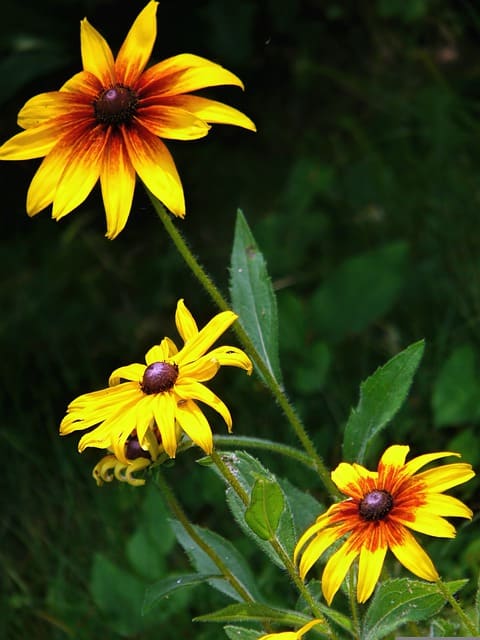
Black-eyed Susans are hardy, cheerful flowers that are easily recognizable due to their golden-yellow petals and dark centers. These perennials thrive in full sun, blooming profusely from mid-summer to fall, making them an essential addition to any sunny garden.
They are not only beautiful but also highly beneficial for pollinators, as they attract bees and butterflies. Black-eyed Susans are incredibly adaptable and can tolerate various soil types, though they prefer well-drained conditions.
To ensure vigorous growth and continuous blooming, deadheading spent flowers is recommended. Additionally, these sun-loving plants are excellent for mass plantings, borders, and even wildflower gardens.
Salvia (Salvia nemorosa)
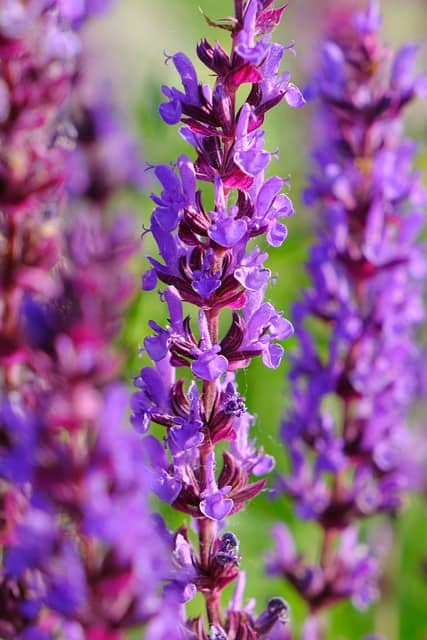
Salvia is a robust perennial that thrives in full sun, offering vibrant spikes of blue, purple, or pink blooms throughout the summer. Known for their aromatic leaves, salvias are drought-tolerant and perfect for low-maintenance gardens.
These plants can grow between 1 to 3 feet tall, creating vertical interest in flower beds. Regular deadheading can promote more blooms, extending the season. Salvia also attracts hummingbirds and bees, adding life to your outdoor space.
Plant them in well-drained soil, and provide sufficient air circulation to keep them healthy. This reliable perennial is ideal for borders, rock gardens, or as focal points in mixed plantings.
French Lavender (Lavandula angustifolia)
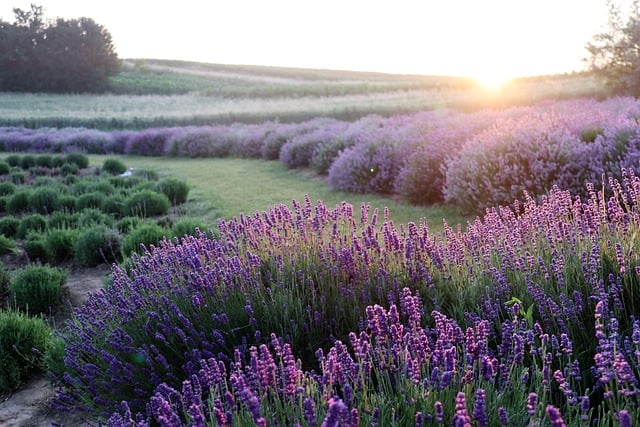
French lavender brings not only visual beauty but also an exquisite fragrance that can transform any garden space. This perennial thrives in full sun, producing long spikes of purple flowers and aromatic gray-green foliage throughout the summer months.
The drought-tolerant nature of French lavender makes it an excellent choice for low-water landscapes. Provide well-draining, sandy soil, and water sparingly to prevent root rot. Harvesting the flowers not only encourages new growth but also allows you to enjoy their fragrance indoors.
Besides its beauty, French lavender is often used in culinary applications and as a herbal remedy, making it both practical and delightful.
Shasta Daisy (Leucanthemum x superbum)
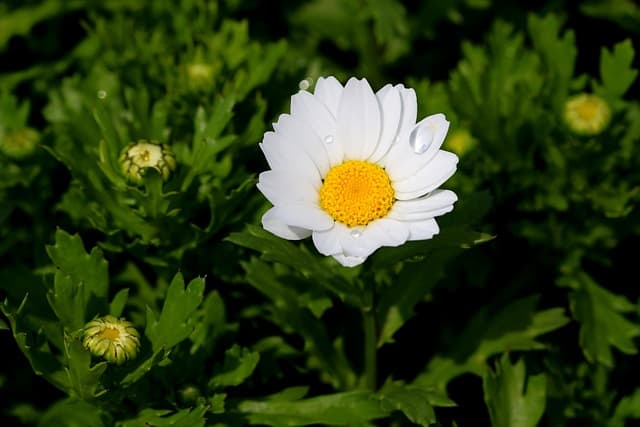
The classic Shasta daisy is a joyful symbol of summer gardens, known for its bright white petals and sunny yellow centers. These perennials thrive in full sun, producing abundant blooms from early summer through early fall.
Installation of Shasta daisies typically involves well-drained soil and regular watering, especially during dry spells. They are highly resilient, attracting butterflies and other beneficial insects to your garden.
Deadheading spent flowers can promote longer blooming periods, allowing your garden to remain vibrant and friendly to pollinators all summer long.
Russian Sage (Perovskia atriplicifolia)
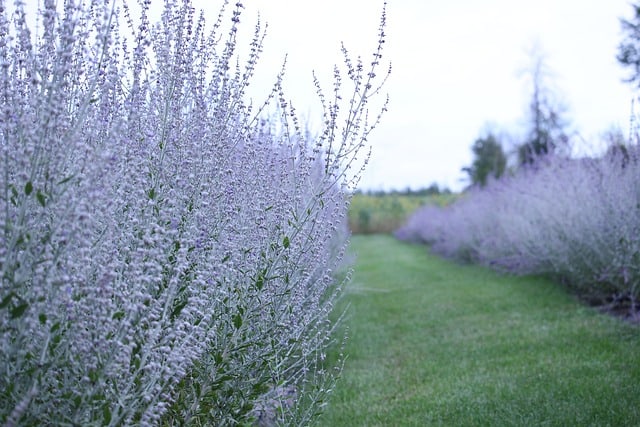
Russian sage is a stunning perennial that combines attractive silvery foliage with delicate blue flowers, growing vigorously in full sun. This plant blooms from mid-summer into fall, creating a beautiful contrast against the greens in your garden.
Highly drought-resistant, Russian sage thrives in well-drained soil and is an excellent choice for water-wise landscaping. It can grow up to 4 feet tall, making it suitable for backdrops in flower beds or as privacy screens.
The soft texture of its leaves provides contrast with other plants, while also attracting pollinators. Prune dead stems in early spring to encourage new growth, keeping your garden looking fresh and vibrant.
Hardy Fuchsia (Fuchsia magellanica)
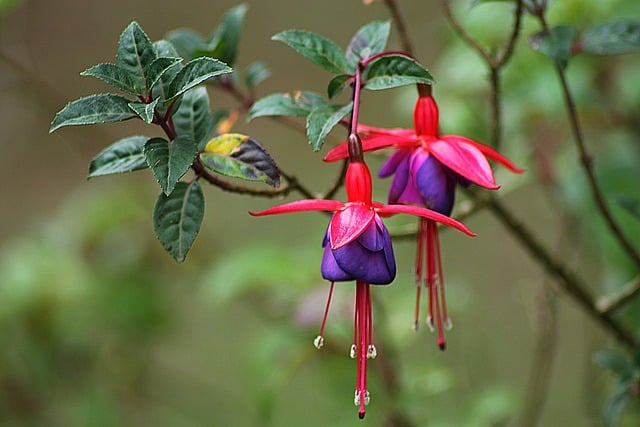
Hardy fuchsia presents an explosion of color with charming pendant flowers resembling tiny lanterns. These lovely blooms come in shades of pink, purple, and white, blooming abundantly throughout the summer until the first frost.
While often thought of as shade lovers, there are hardy varieties that thrive in partial to full sun. Plant them in well-drained soil enriched with organic matter, and provide consistent moisture for optimal growth.
Adding hardy fuchsia to your garden introduces not only color but also attraction for hummingbirds, adding an element of motion and interest to your garden’s atmosphere.
Rose Of Sharon (Hibiscus syriacus)
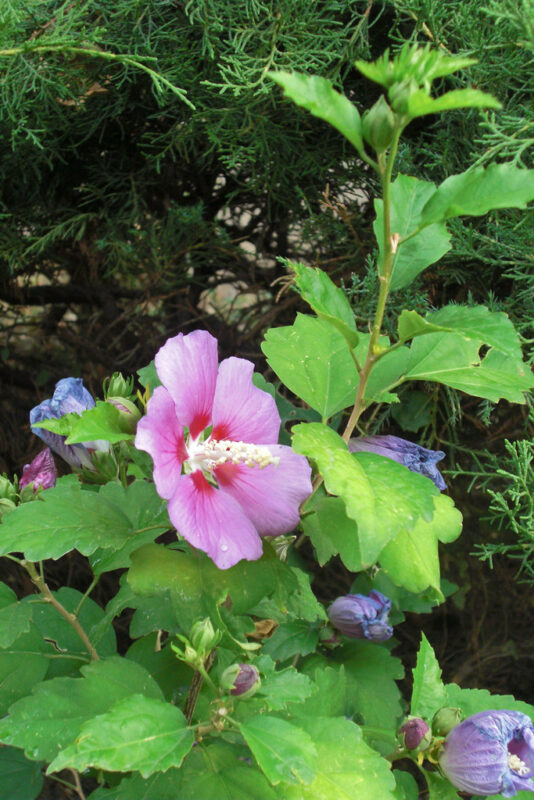
The Rose of Sharon, or Hibiscus, is a large, flowering shrub that produces eye-catching blooms in various colors, including white, pink, purple, and blue. This plant thrives in full sun and blooms from mid-summer to fall, providing a spectacular display of flowers and foliage.
Rose of Sharon can grow into a sizable shrub, which makes it perfect for borders and hedges. It tolerates different soil types, as long as they are well-drained. Regular pruning encourages bushier growth and enhances blooming.
These shrubs not only showcase beautiful flowers but also serve as a wonderful habitat for attracting butterflies, making them a delightful feature in any garden.
Purple Coneflower (Echinacea purpurea)
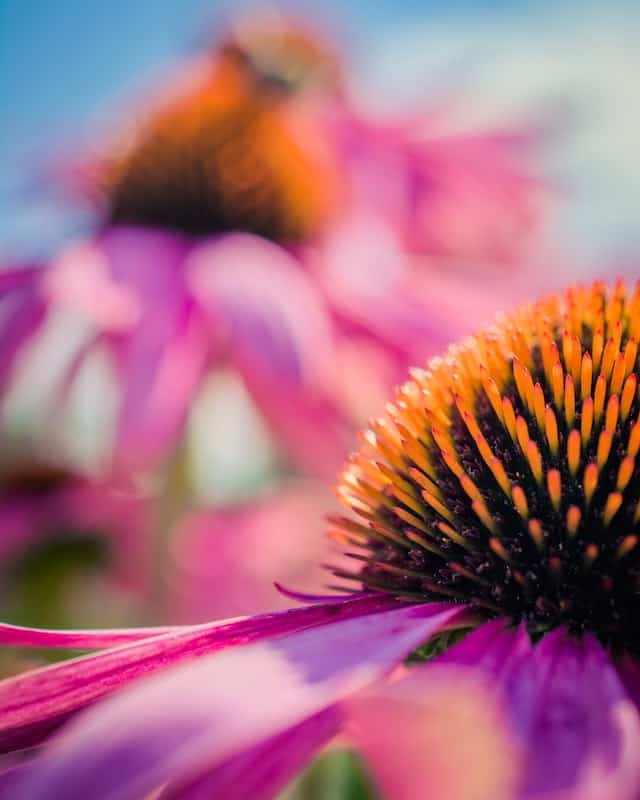
The purple coneflower is a well-loved perennial renowned for its stunning purple petals and unique seed heads. Thriving in full sun, these flowers bloom from early summer to fall, adding rich color and a touch of whimsy to your garden.
Coneflowers are incredibly hardy, making them perfect for a variety of soil types and climates. Their drought-resistance ensures they continue to thrive even in challenging conditions. They are also a vital source of nectar for butterflies and bees, enhancing your garden’s biodiversity.
Deadheading will promote further blooms, and their seeds can attract birds in the fall, making the purple coneflower a fantastic year-round investment for your landscape.
Yarrow (Achillea millefolium)
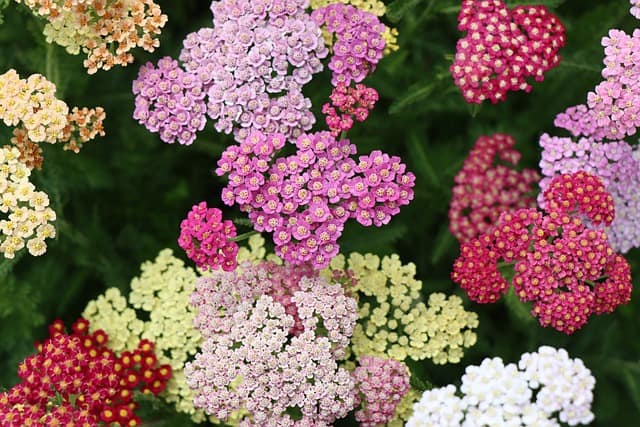
Yarrow is another versatile perennial that can withstand full sun conditions while adding a splash of color to your garden. Known for its feathery foliage and clusters of small flowers in shades of yellow, pink, or white, yarrow is also a magnet for pollinators.
These resilient plants bloom over a long season, often from late spring until fall. Yarrow prefers well-drained soil and is highly drought-resistant, making it ideal for low-water gardens.
In addition to its beauty, yarrow is valued for its medicinal properties, often used in home remedies. The flowers retain their color and shape even when dried, adding to their potential for arrangement and decoration.
Annual Plants That Love Sun + Bloom All Summer
In addition to the beautiful perennials, there are numerous annual flowers that thrive in bright, sunny locations and provide continuous blooms throughout the summer.
Cosmos (Cosmos bipinnatus)
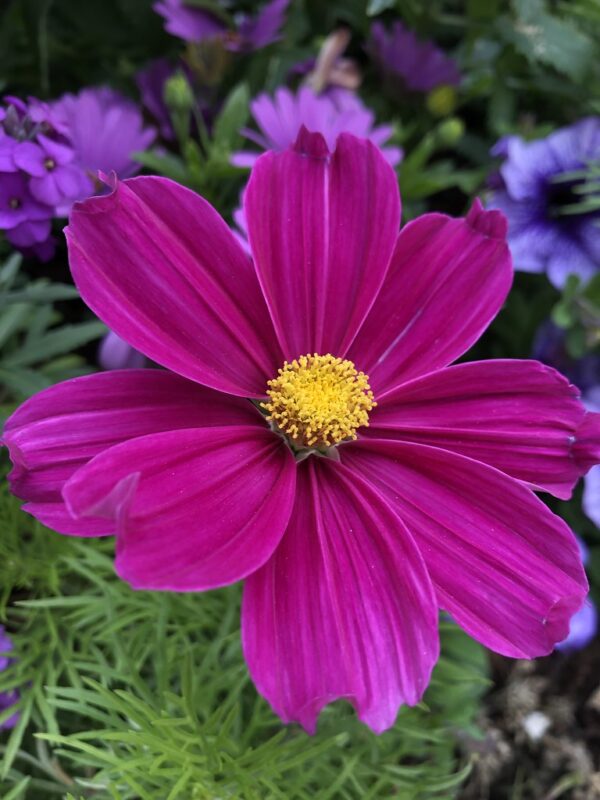
Cosmos are vibrant annuals that can grow 4 feet tall, displaying flowers in shades of pink, white, and orange. These sun-loving plants are incredibly easy to care for; they thrive in poor soil and need minimal watering, making them perfect for beginner gardeners.
Their airy foliage provides an ethereal quality and attracts butterflies, making the garden feel alive. Plant cosmos in clusters for a stunning pop of color that lasts from summer to early fall.
Sunflowers (Helianthus annuus)
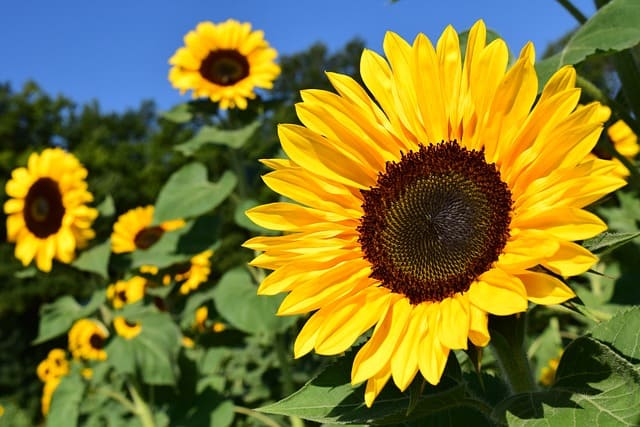
Sunflowers are iconic flowers known for their impressive height and large, cheerful blooms that can turn to follow the sun, a phenomenon known as heliotropism. Thriving in full sunlight, these annuals are easy to grow and are often planted for their aesthetic appeal and edible seeds.
Sunflower varieties range from giant types that can grow over 10 feet tall to dwarf varieties suitable for smaller gardens. These flowers attract various pollinators and birds, enhancing the liveliness of any garden.
Zinnias (Zinnia elegans)
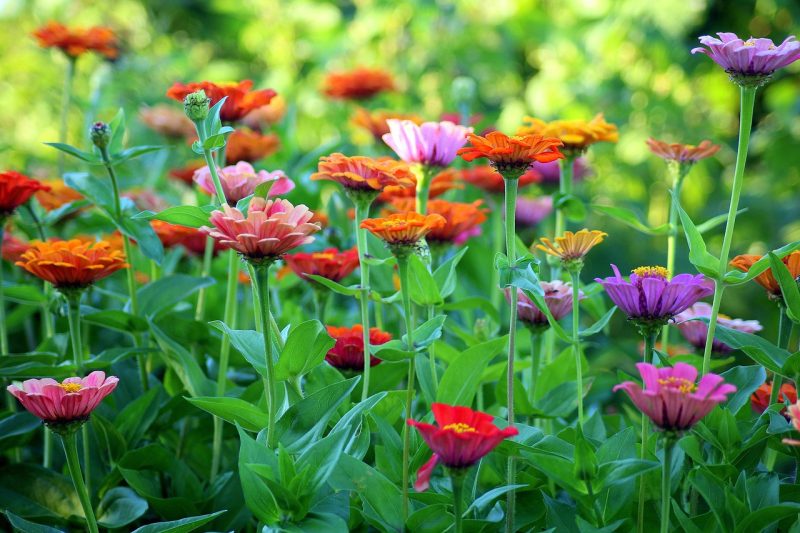
Zinnias are beloved annuals known for their bright, cheerful flowers in a variety of colors, including red, pink, orange, and yellow. These flowers thrive in full sun and bloom abundantly from summer to frost.
With a straightforward cultivation process, zinnias love well-drained soil and benefit from regular deadheading to promote more blooms. They are great for cut flower arrangements and make a stunning impact whether planted in the ground or in pots.
Geraniums (Pelargonium)
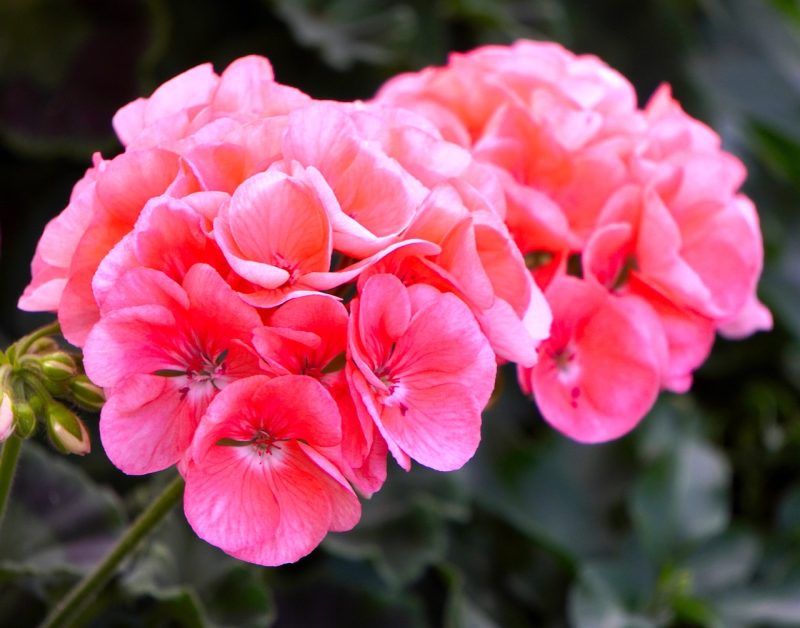
While often thought of as shade plants, certain geranium varieties also thrive in full sun. These annuals produce clusters of vibrant flowers in various shades, which create a warm and welcoming atmosphere in gardens and balconies.
Geraniums are known for their lush, rounded foliage and continuous blooms throughout the summer. Ensuring adequate moisture and deadheading will maximize their performance.
Marigolds (Tagetes)
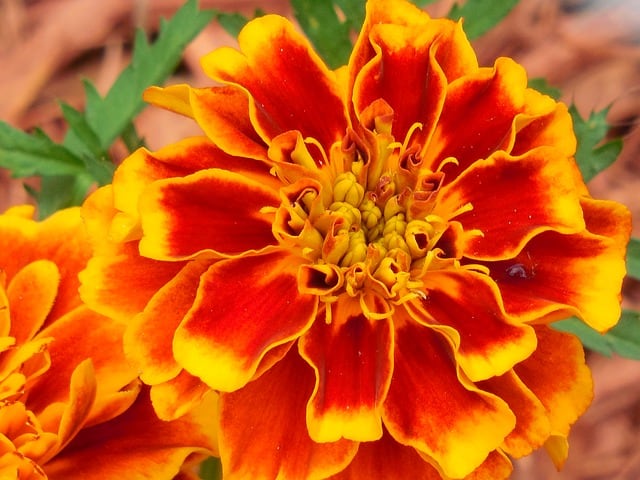
Marigolds are classic companions in summer gardens due to their vibrant, cheerful blooms that come in shades of orange, yellow, and red. They thrive in full sun and can bloom all summer long, adding a lively and colorful element to beds or borders.
Besides their aesthetic appeal, marigolds are known for their pest-repelling qualities, making them a favorite among gardeners. They grow well in a variety of soil types and are low-maintenance, providing a bountiful display with minimal effort.
Million Bells (Calibrachoa)
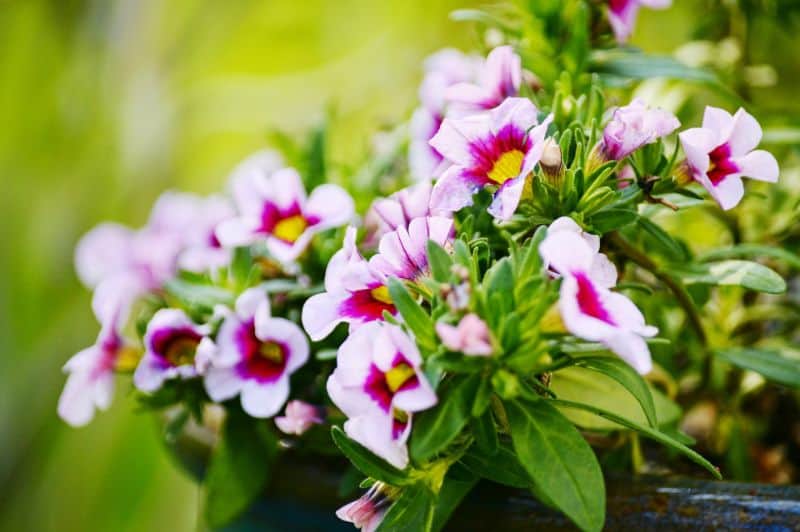
Million bells are trailing annuals renowned for their petunia-like blooming ability. These flowers produce an abundance of tiny, bell-shaped blooms in a variety of colors, perfect for hanging baskets, window boxes, or ground cover.
Thriving in full sun, million bells require consistent watering but can also handle some drought. Their prolific blooming extends from spring until fall, ensuring your garden stays vibrant throughout the summer months.


